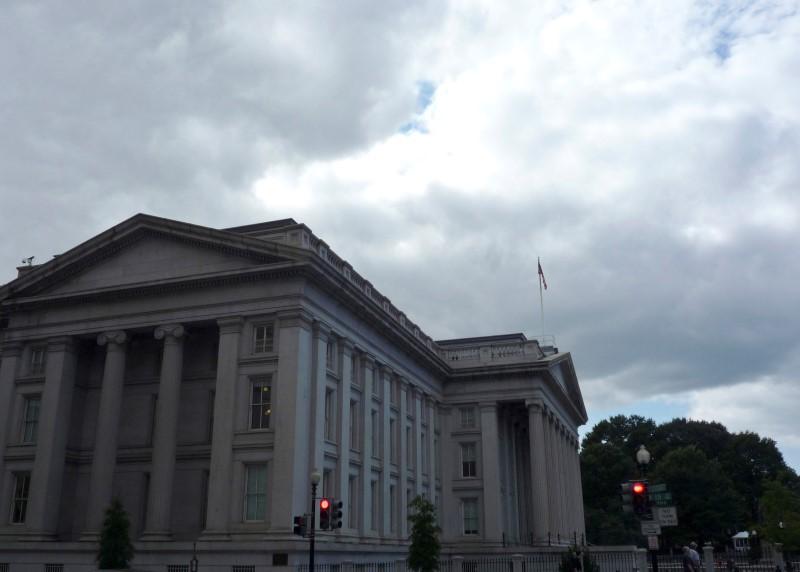Home -> News -> Media -> U.S. Treasury looks to hold more cash to deal with future crises
U.S. Treasury looks to hold more cash to deal with future crises

WASHINGTON (Reuters) - The U.S. Treasury wants to increase its daily cash holdings, a measure that would help Washington pay its bills during a crisis, a senior official said on Wednesday.
If adopted, the new policy would help the government in the event an emergency shut down markets and left Washington unable to borrow money to pay creditors and other obligations.
"Holding more cash on hand is a prudent measure," Treasury Assistant Secretary Matt Rutherford said in a news conference.
He said the measures would help public finances weather events like the Sept. 11, 2001 attacks or 2012's Superstorm Sandy, both of which disrupted Wall Street trading. Washington borrows vast sums in weekly auctions to pay its bills.
Investors who met with Treasury officials on Tuesday urged the government to increase its daily cash holdings to around $500 billion. That would be enough to cover about 10 days worth of outlays.
A change in policy, however, would not buy the government any additional time if it runs into a legal limit on borrowing next year.
Current law will limit the amount of cash Treasury can hold when a cap on federal borrowing becomes binding again in March 2015. The U.S. government suspended the debt ceiling in February of this year.
Even if the Treasury changes its cash management policy, it would be obligated to reduce its daily balance to around $33 billion in March, Rutherford said. The Treasury held about $66 billion in cash on Monday, a typical level in recent months.
Rutherford said a decision had not been made yet on the policy, and that officials would be studying the matter.
Rutherford also announced the United States will buy back debt in the coming quarter for the first time since 2002 to make sure its computer infrastructure is adequate for any future buyback operations.
He stressed the buyback does not signal any current need to buy back debt.
"Given that IT systems have changed significantly in the 12 years since the last buyback operation, Treasury believes it is prudent to regularly test the current IT infrastructure," Rutherford said.
He described the upcoming buyback as a "small-scale" operation.
Buybacks can help the Treasury manage liquidity in different segments of the bond market when budget deficits are declining, Rutherford wrote in a 2007 paper on buybacks that he co-authored when he was on the staff at the Federal Reserve Bank of New York. The paper also said buybacks can help the Treasury manage its cash balance and smooth weekly fluctuations in Treasury bill offerings.
The tests could augur more substantial buybacks years down the road, said Thomas Simons, a money market strategist at Jefferies & Co. in New York.
"Why test the buyback when you won't use it at some point?" Simons said.
Rutherford's comments on debt management came as the Treasury said it would hold steady borrowing amounts for two- and three-year maturities during the coming quarter, and that coupon auction sizes will remain steady going forward.
- .U.S. Treasury looks to hold more cash to deal with future crises
- .Yum, McDonald's in Shanghai food safety investigation
- .Yellen defends loose Fed policy, says job market still too weak
- .Carl Icahn says 'time to be cautious' on U.S. stocks
- .Samsung Electronics says second quarter profit likely down 24.5 percent; worst in two years
- .U.S. jobs data seen reinforcing strong growth outlook
- .Asia stocks up on buoyant Wall Street, oil near highs

